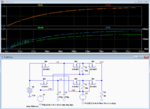righteous
Full Member level 2
Gents,
I want to implement the following circuit the simplest way possible. The simple idea is to switch over C1 and C2 so that R3 does not (directly) draw current from V2. But I'm having trouble selecting the right components, especially as I believe FET's are out the window due to their body diode. Any creative and ingenious suggestions are highly appreciated.

I want to implement the following circuit the simplest way possible. The simple idea is to switch over C1 and C2 so that R3 does not (directly) draw current from V2. But I'm having trouble selecting the right components, especially as I believe FET's are out the window due to their body diode. Any creative and ingenious suggestions are highly appreciated.

